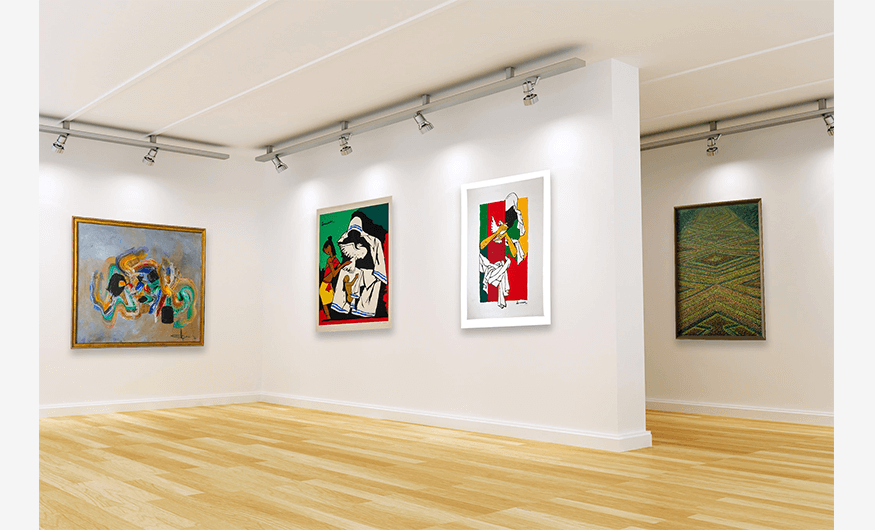Art has always had the power to draw attention, spark emotion, and stir thought. But exclusive art galleries take that experience to another level. They are not just spaces to view art. These galleries reflect a mix of status, taste, and cultural value. From private showings to limited exhibitions, everything inside feels rare and important.
What Defines Exclusive Art Galleries?
An exclusive art gallery offers a curated experience for a select audience. These galleries usually display work from highly respected artists. Some are private and open by appointment only. Others limit access through membership or invitations.
They don’t aim for crowds. Instead, they focus on quality, privacy, and deep appreciation. Visitors often include collectors, celebrities, and critics. Every piece is chosen with a purpose. Each room is designed to make people stop and think.
A Quiet Yet Powerful Influence
Exclusive galleries may be small in size, but their impact is wide. Many major art trends begin within these walls. When a collector sees a work here, it can quickly rise in value. Artists shown in exclusive settings often gain credibility faster.
These galleries set a tone for the wider art world. What they show matters. Their choices guide auctions, fairs, and media buzz. Some of the world’s most talked-about works debuted in these quiet, carefully managed spaces.
Privacy and Prestige Matter
Unlike public museums, exclusive art galleries protect the viewer’s privacy. They allow buyers to browse without pressure. Visitors often have private time to reflect or talk with the curator. This kind of space encourages serious thought.
Prestige plays a big role too. Getting your work into an exclusive gallery is not easy. Artists go through strict selection processes. Gallery owners and curators spend years building trusted reputations. Their approval means something.
Limited Shows, Big Impact
Most exclusive galleries don’t run daily shows. Instead, they present short-term exhibitions. Some last only a few days. This builds excitement. It also encourages serious buyers to act quickly.
Often, these shows include rare works not seen elsewhere. This adds to their appeal. Collectors know they might never see that piece again. And that sense of rarity fuels demand.
Supporting New and Established Talent
While some galleries focus on well-known names, others give a platform to emerging voices. A debut in an exclusive space can change an artist’s path. It brings the right eyes to the work.
Curators in these galleries take pride in spotting future stars. They carefully review portfolios and backgrounds. When they make a choice, they commit to presenting the artist’s vision at its best.
The Role of the Collector
Collectors shape the success of exclusive art galleries. Their interest and purchases help artists thrive. Most collectors want more than just a pretty painting.
They rely on the gallery’s expertise. They want honest advice, not just sales talk. That trust keeps them coming back. It also builds lasting relationships between galleries and collectors.
Interior Design Meets Art
Presentation is everything. Exclusive galleries often work with interior designers to frame the experience. Wall colors, lighting, and spacing matter a lot. Some use natural light. Others focus on spotlights and shadows.
Seating areas let visitors pause and reflect. Thoughtful layouts prevent visual clutter. Each element supports the art without stealing attention.
Location Adds to the Appeal
Many exclusive art galleries are in stylish or historic areas. Think Paris, New York, London, or Milan. Some are hidden behind unmarked doors. Others sit inside luxury buildings or cultural centers.
The setting adds to the overall feel. Visitors enjoy more than the art. They take in the mood of the space, the sounds of the neighborhood, and the sense of being part of something rare.
Events and Private Openings
Public openings are rare in exclusive galleries. Instead, they host private viewings or by-invitation events. These moments allow for calm discussions. Visitors can talk with the artist, ask questions, or enjoy a quiet drink.
These events also create buzz. Photos and mentions spread online and in the press. Yet, the real experience stays limited to the people who were there.
Online Access Still Plays a Part
While physical visits matter most, some galleries do offer online previews. These are often password-protected or sent only to select contacts. Digital catalogs may be sent ahead of a show.
Still, the in-person visit remains the most valued part. You can see textures, colors, and scale in ways screens just can’t match.
Building a Lasting Impression
An exclusive gallery is more than what’s on the walls. It’s about how the experience makes you feel. From the greeting at the door to the final piece in the show, everything is part of a larger story.
Galleries work hard to leave a lasting impression. They want visitors to talk, remember, and return. That’s how they build reputations that last for decades.
A Growing Interest in Global Artists
Many exclusive galleries are now expanding their focus. They are bringing in talent from different countries, cultures, and backgrounds. This adds new voices and fresh ideas. It also draws in diverse buyers.
This global reach adds depth. It reflects how art connects people beyond borders. And it gives lesser-known regions a chance to shine.
Final Thoughts
Exclusive art galleries are quiet powerhouses. They shape taste, define value, and create rare moments. For artists and collectors, they offer a space that respects the work. For visitors, they provide something to remember.
Step into the world of exclusive art galleries. See rare pieces, meet top curators, and enjoy a calm, focused space built for true appreciation.
You may also like
-
Celebrate Girlfriend Day and Friendship Day with Heartfelt eCards from LovingECards.com
-
Farewell Card Inspiration: Drawing from Personal Experiences
-
Transforming Your Space with Canvas Prints, Photo Tiles, and Wall Art
-
The Timeless Appeal of Anniversary Cards: Celebrating Love and Milestones
-
Smiles at Your Desk: The Impact of Group Cards on Workplace Happiness.

